Published November 1, 2019, by Michele Brown
United Way of Anchorage invites you to join us over the next few weeks as we track Home for Good, an initiative to end homelessness for some of our neighbors among the hardest-to-house. This carefully planned collaboration, using proven methods, promises new light in the lives of people too often written off, better use of limited resources and a cleaner, safer city for all of us.
Home for Good – Part 2: Why Supportive Housing Works
Home for Good relies on two basic principles: Housing First and supportive housing.
“Housing First” is the principle that a home off the street and out of shelters is the first step to a better life. That’s because a home provides stability that allows a person the breathing room to work on addictions, mental illness, and any other disabling part of his or her life. Chronic homelessness means chronic chaos. It’s hard to stay clean, maintain meds, keep appointments – let alone work — when you live in a park or on pavement. That changes when you have a stable place to rest and recharge, where you can count on basics most of us take for granted – a shower, a bed, an address.
Supportive housing means intensive case management for tenants to help deal with their challenges, and thus be able to maintain housing and maintain progress toward a better life. Case management is voluntary and robust – voluntary, in that case management isn’t mandatory for housing; robust, in that providers offer and encourage case management frequently to tenants, who stand a far better chance to stay housed and healthy if they accept.
Evidence shows that voluntary participation in case management is far more effective than requiring case management for housing. As of Oct. 17, there were: four persons in bridge housing (no lease); 13 persons in leases; and 19 persons receiving intensive case management.
Case management can provide everything from help with learning how to care for a home to the ongoing struggle with addictions, finding and keeping a job, living with trauma, and the social dislocation felt when out of the homeless cycle. Case managers help tenants take full advantage of the stability having a home brings.
RurAL CAP, already responsible for 120 units of supportive housing in Anchorage, is the main provider and partner in Home for Good, an initiative led by United Way of Anchorage to help the hardest to house people in Anchorage break the cycle of chronic homelessness, prison and crisis care.
Carolyn Palembas, a RurAL CAP case manager, recounts the joy of turning big obstacles into small victories for tenants. “So many things to navigate,” she said. “The one thing my youth has helped with is cell phone technology.” That knowledge makes a difference for someone who hasn’t used a phone in 10 years.
That’s part of the long timeline that the road to health entails.
When you’ve been living on the street for years, a home of your own can be disorienting medicine. It’s hard to acclimate sleeping in a bed – or making that bed. Doing laundry hasn’t been a frequent part of your life – never mind cleaning the dryer’s lint filter. Homelessness has its own hard regimen but doesn’t include ordinary housekeeping.
So, providers and tenants have cause to celebrate what might look like small victories at face value – picking up trash, a week of sobriety become milestones. You can break the cycle of cell, shelter, and camp, but to break habits of bleak survival is a longer haul.
As Palembas put it: “No one can just unpack that in a day or two.”
But time, patience and case managers pay off.
Miyuki Sato, RurAL CAP clinical program manager, tells of a woman who lived on the street for years, bags of what little she had hanging from her walker. Paranoid, she didn’t want to be around people. She accepted no services despite three or four years of outreach.
“Finally, that person moved in a while back,” Sato said. Gradually she began to connect. No night-and-day transformation, but with a place to call home “now she has a cell phone, she cooks, she does all the fun stuff for herself.”
Having a door opens doors. Some tenants still drink and use drugs, but they tend to do so less often. The need to medicate diminishes in the absence of cold, chaos, and hunger.
Housing isn’t a miracle that ends drinking and drug use, but the stability of a home allows case managers and tenants to concentrate on “harm reduction,” whereby those who aim to help meet users where they’re at to keep them and the people around them safe.
Stability makes it easier for people to emerge in the welter of their problems, and for those who care about them to see them again, not just their problems.
They’re able to reconnect their relationships with families, often broken in the exile of homelessness.
Sato pointed out another reconnection that happens with supportive housing. Tenants will “go back to something they used to enjoy” – art, for example. That’s hard to do with freezing fingers and self-medication to the point of incoherence. And once housed, people begin to get treatment for physical and mental maladies, treatment that improves both their health and their outlook.
“When they move in, they have multiple conditions,” she said. “Now you can take care of it.”
For care, Home for Good works because the care providers know where their clients live – again, the stability of housing first. One of the tenets of the current work on homelessness in Anchorage is that all hands will know people’s names, not just case numbers or demographic data. That’s good. But you can’t help if you can’t find the person you’re trying to help, no matter how well you know him. People with a place to live are likely to be at home sometimes when you call.
For cost, Home for Good works because tenants and providers can organize and monitor consistent care – advantages of stability and support. Less emergency room, more clinic. Regular counseling. More providers to give effective help, thus fewer tenants breaking the law, so less police, court and prison time.
This is hard, long-term work with no guarantees but the promise of what’s already been done, in Anchorage and elsewhere. As RurAL CAP’s providers point out, the people Home for Good is trying to house have complex challenges that can seem too much to resolve. Miyuki Sato counters with evidence-based faith: “People can change.”
And even if the changes logged are a just series of small victories, that puts us far ahead of the status quo in return on investment. And human dignity.






That is 120 people who are not on the street. Better for them and better for us. One need not be religious to believe this is God’s work